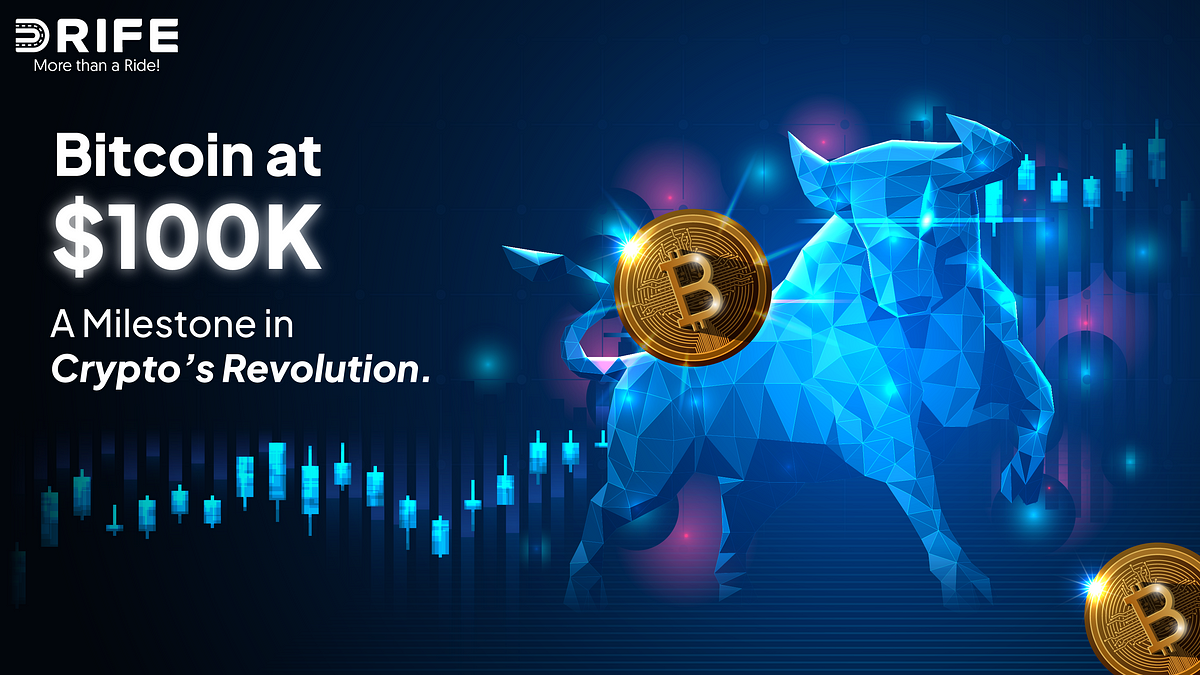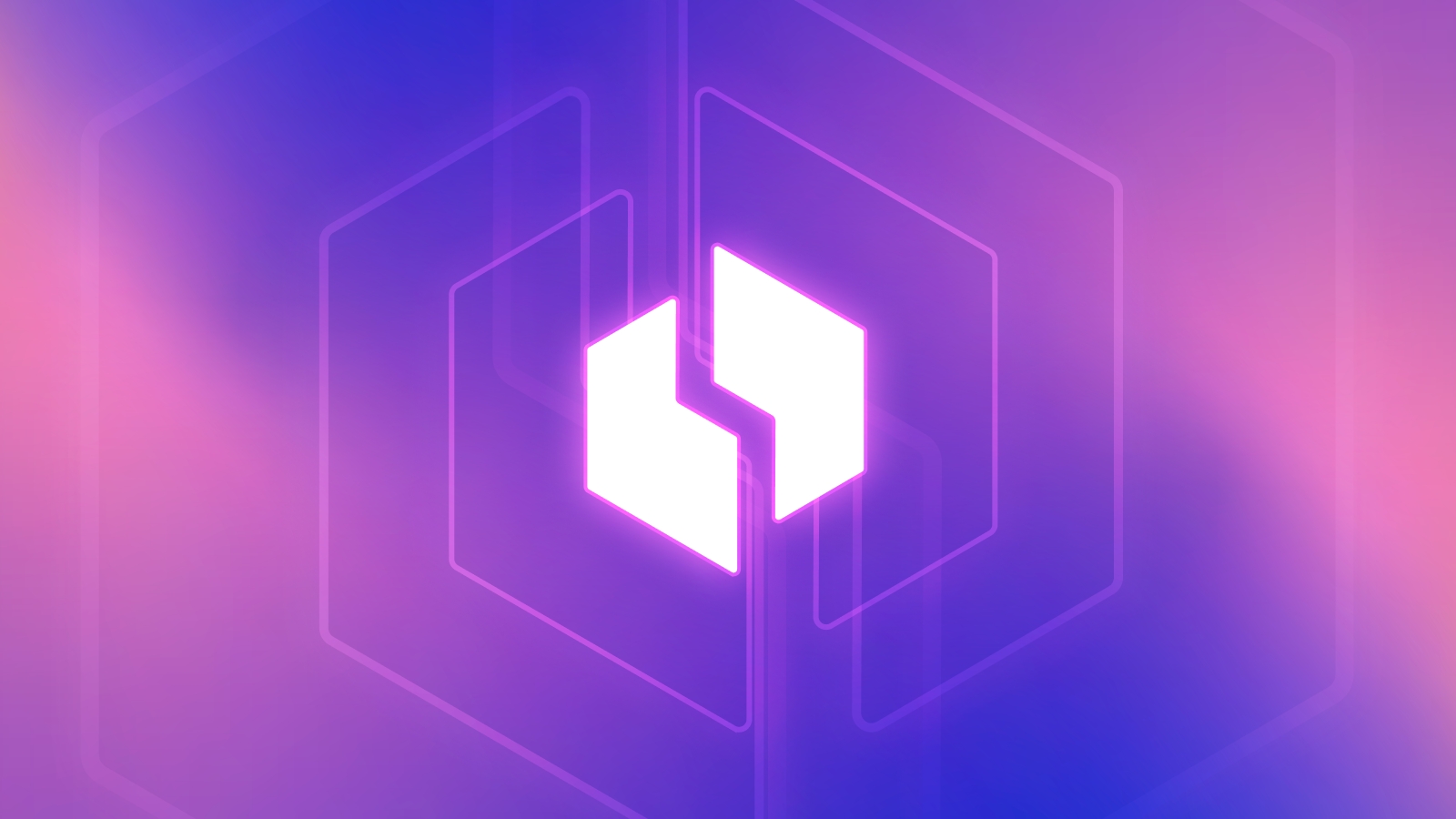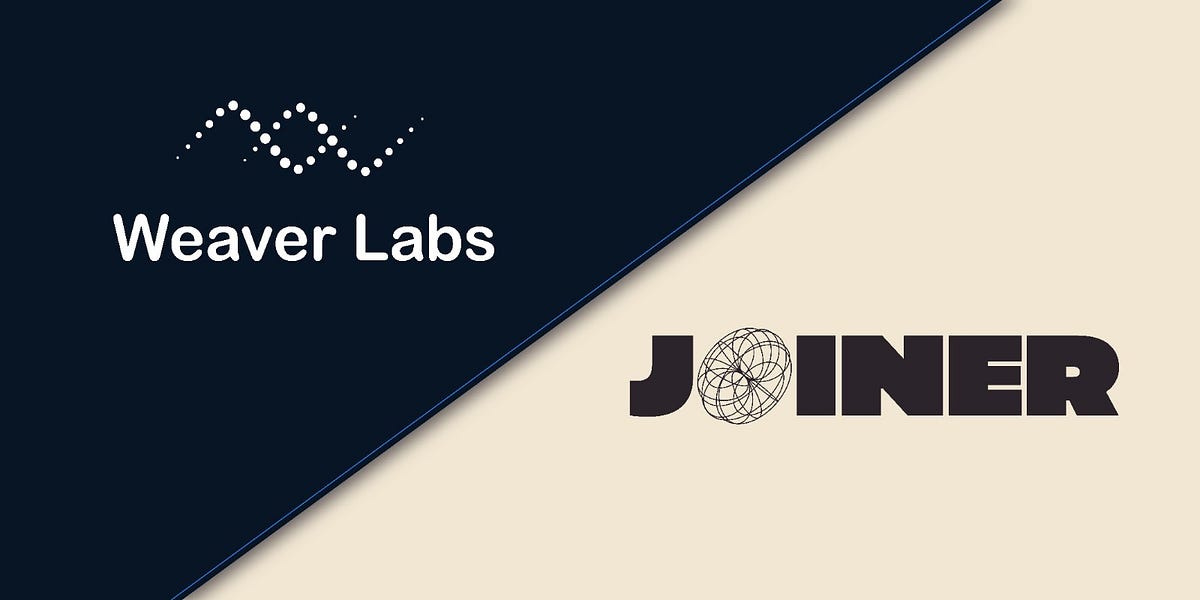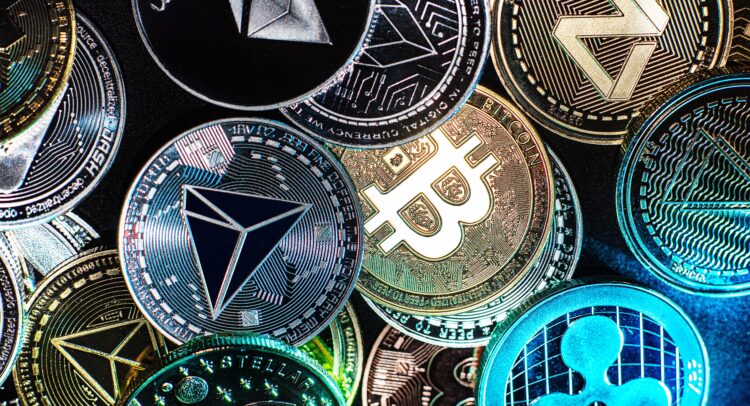Latest DePIN Funding News

4 months ago
Bitcoin Soars to $100,000: A New Era in Cryptocurrency
Bitcoin has officially reached a monumental milestone, hitting the $100,000 mark. This achievement is a testament to its evolution from a niche digital currency to a mainstream financial asset. In 2017, Bitcoin first crossed the $10,000 threshold, marking a significant moment for the cryptocurrency community. Back then, Bitcoin was often seen as a quirky alternative, primarily used for small purchases like pizzas. However, the journey since then has been nothing short of remarkable, characterized by extreme volatility and a growing belief in its potential as a store of value.
The surge to $69,000 in 2021 was another pivotal moment, fueled by a mix of institutional investment and retail enthusiasm. This unprecedented price jump was likened to a rocket launch, showcasing the growing acceptance of Bitcoin as a legitimate asset class. Factors such as institutional recognition and social media influence played crucial roles in this ascent. Yet, the cryptocurrency market is notorious for its fluctuations, and Bitcoin's price corrections serve as a reminder of the inherent risks involved in trading digital currencies.
As we look towards 2024, the political landscape, particularly the upcoming U.S. elections, is influencing Bitcoin's trajectory. Amidst political uncertainty, many investors are turning to Bitcoin as a hedge against potential economic instability. Its decentralized nature and limited supply position it as a viable alternative to traditional assets. While the future remains uncertain, Bitcoin's rise to $100,000 is a clear indication that it has cemented its place in the global financial system, making it a topic of serious discussion among investors and financial experts alike. This milestone is not the end but rather a new chapter in the ongoing cryptocurrency revolution.

4 months ago
Karrier One Launches Decentralized WiFi Hotspot Devices on Sui Network
Karrier One, a decentralized physical infrastructure network (DePIN) built on the Sui Network, has announced the global launch of its innovative WiFi Hotspot devices. This initiative allows individuals to contribute to a decentralized connectivity ecosystem by providing WiFi offloading services to various carriers, earning KONE tokens in return. This development marks a significant advancement in decentralized networks, integrating Web3 technology with practical applications that address the increasing demand for internet connectivity.
As internet usage continues to rise, traditional networks are under pressure from high traffic volumes. Karrier One tackles this issue by introducing a decentralized WiFi offloading network powered by user-owned hotspot devices. Participants can offload data traffic from conventional carriers to the Karrier One Network, enhancing efficiency and reducing costs. The model is simple: device owners provide WiFi connectivity to mobile carriers and earn KONE tokens, creating an ecosystem where anyone can participate and benefit while contributing to a more efficient internet.
The strategic partnership with Sui Network is crucial for Karrier One's mission, enabling the deployment of SCION Services, Walrus Nodes, and Validator Nodes on the Sui blockchain. This collaboration aims to leverage advanced blockchain technology to enhance network functionality and scalability. As Jameel Khalfan from Sui Foundation noted, this initiative not only adds capacity to traditional telecom providers but also empowers users in underserved areas to earn from their contributions. Karrier One’s vision of democratizing access to connectivity aligns with the broader objectives of Web3, redistributing value and control from centralized entities to the community, ultimately revolutionizing global connectivity.

4 months ago
Chia Blockchain Enhances Proof of Space Format for Farmers
Chia farmers are set to benefit from significant advancements in the blockchain's proof of space format, aimed at addressing energy consumption and security risks. The initial redesign has already made strides in enhancing security, making the network up to 1000 times more resistant to rental attacks while improving compression resistance. The latest updates promise even greater efficiency, reduced energy needs, and enhanced security, allowing farmers to utilize lightweight devices like the Raspberry Pi 5 to harvest vast amounts of space, with new plot sizes starting as small as 3 GiB.
Key improvements include lower minimum specifications for harvesting, which make farming more accessible, and more efficient plotting processes that reduce memory requirements. The new format also significantly decreases the network's overall energy consumption without compromising security or compression resistance. Innovations such as the "frozen" quality string and the "chain of proofs" enhance compression resistance and minimize energy consumption during honest farming, ensuring that the network remains fair and sustainable.
As the Chia network transitions to this new proof of space format, farmers can expect a more efficient and secure farming experience. The upcoming Chia Improvement Proposal (CHIP) will provide detailed specifications and technical insights into these changes, which are designed to optimize the proof of space format for real-world conditions. With these advancements, Chia aims to maintain its commitment to energy efficiency and security while expanding accessibility for farmers of all sizes.

4 months ago
JOINER Project: Paving the Way for 6G and Beyond in the UK
The telecom industry is on the brink of a transformative era with the advent of 6G technology, which promises to redefine connectivity and innovation. The JOINER project, the UK’s first national accelerator program for 6G and beyond, aims to unite researchers, businesses, and government entities to address significant challenges in the telecom sector. By fostering collaboration and breaking down silos, JOINER creates a shared platform that facilitates resource sharing and the development of innovative solutions, ultimately driving the industry forward.
A standout feature of the JOINER initiative is the implementation of Hypervisor as a Service (HaaS), based on Weaver Labs’ Cell-Stack software. This service introduces a layer of cloud automation that simplifies the management of complex Telco-Cloud platforms, such as Kubernetes and OpenStack. By enabling zero-touch deployment and management, HaaS allows researchers to concentrate on innovation without the burden of technical complexities associated with cloud infrastructure. This streamlined approach enhances collaboration and accelerates the development of new technologies, positioning the UK as a leader in telecom innovation.
JOINER's mission extends beyond HaaS, as it aims to facilitate large-scale research, create shared telecom testbeds, and foster collaboration among various stakeholders. With plans to host experiments across multiple interconnected locations and deliver the UK’s first full-scale 6G demonstration by March 2025, JOINER is set to play a pivotal role in shaping the future of telecom. By training the next generation of professionals and strengthening the UK's leadership in global telecom standards, JOINER, supported by Weaver Labs, is paving the way for a smarter, more connected world powered by 6G and beyond.

4 months ago
Decentralized Cloud Solutions: The Future of AI Computing
The artificial intelligence (AI) sector is experiencing rapid growth, yet many companies still rely on centralized services like Amazon Web Services (AWS) for their cloud computing needs. This reliance can lead to high costs and potential outages. Wes Levitt, head of strategy at Theta Labs, argues that decentralized cloud computing offers a solution to these challenges. In a recent episode of The Agenda podcast, Levitt discussed how decentralization not only reduces costs but also enhances reliability and flexibility for users. He emphasized that by moving away from a few centralized points of failure, Theta Labs aims to democratize access to computing power, particularly in the AI and academic sectors.
Theta Labs is the driving force behind the Theta Network, which positions itself as a decentralized cloud solution for AI, media, and entertainment. Levitt noted that while the company initially focused on media, it has seen a significant increase in AI-related clients, especially from academic institutions. He highlighted partnerships with top Korean universities and the University of Oregon, explaining that decentralized cloud services provide a cost-effective alternative for organizations that cannot afford AWS. This flexibility is crucial for academic institutions, which often need to scale their computing resources rapidly for research projects before conferences and then scale back down afterward.
The decentralized AI niche has seen remarkable growth, with the market capitalization of AI and big data crypto projects skyrocketing from $16.17 billion in December 2023 to over $70 billion by December 2024. Despite this surge, Levitt clarified that the goal of Theta Network is not to eliminate AWS or other centralized cloud providers. He acknowledged that there will always be use cases for centralization, particularly for specific applications requiring focused resources. However, he remains optimistic about the potential for decentralized AI to compete with centralized solutions in the future, suggesting that as demand for decentralized services grows, they could become equally significant in the tech landscape.

4 months ago
The Rise and Future of Decentralized Physical Infrastructure Networks (DePIN)
Decentralized Physical Infrastructure Networks (DePIN) are emerging as a transformative force in the blockchain landscape, utilizing decentralized protocols to manage physical facilities and address inefficiencies in centralized resource networks. Coined by the Web3 media and research firm Messari, DePIN has gained traction since its introduction, particularly in the latter half of 2023 and throughout 2024. These projects aim to mitigate issues such as human error, malfunctions, and financial opacity, offering more secure and cost-effective alternatives. With approximately 296 active DePIN projects currently, this sector is witnessing exponential growth, indicating a robust interest in decentralized solutions across various industries, including AI, mobility, and health.
The evolution of DePIN can be traced back to early blockchain projects like IOTA and Filecoin, with Helium's launch in 2019 marking a significant milestone for decentralized connectivity. As the term DePIN gained popularity, it encompassed a growing number of projects that leverage blockchain for data management and incentive distribution. By employing a 'plug and play' system, DePIN networks facilitate the interconnection of independent infrastructures, such as IoT devices and decentralized GPU grids. This innovative approach enables efficient data processing and administrative functions, allowing for diverse applications ranging from decentralized ride-sharing to computing resource networks.
Currently valued at $33 billion, the DePIN market is thriving, with several projects achieving market capitalizations exceeding $1 billion. As we look ahead to 2024 and beyond, key developments to watch include the integration of AI, the emergence of multi-token ecosystems, and the expansion into trade finance. Despite facing challenges such as legal uncertainties and the complexity of blockchain technology, DePIN networks are poised for increased adoption across various sectors. By removing intermediaries and creating balanced networks, DePIN could redefine resource management and utility in the decentralized world, making it essential for potential investors to conduct thorough research before engaging with these innovative projects.

4 months ago
Shiba Inu vs. Floki: The Memecoin Showdown
In the latest showdown of the memecoin arena, Shiba Inu ($SHIB) and Floki ($FLOKI) are set to battle for supremacy. Both tokens, riding the coattails of Dogecoin ($DOGE), have carved unique paths in a volatile crypto landscape. As macroeconomic factors, such as the upcoming U.S. CPI data and the indecisive Ethereum/BTC pair, loom large, the altcoin market cap is flirting with levels reminiscent of the 2021 bull run. This environment raises questions about the sustainability of these tokens, especially given the potential for a 25% correction in the altcoin sector. The community strength and speculative nature surrounding these tokens will play a crucial role in their survival amidst the storm.
Shiba Inu, initially launched as a decentralized community experiment, has evolved into a multifaceted ecosystem with ambitions beyond mere speculation. Its offerings include ShibaSwap DEX, plans for an algorithmic stablecoin, and a metaverse project. However, with a staggering total supply of 589 trillion tokens, SHIB faces inflationary challenges, necessitating robust utility adoption to support its valuation. Conversely, Floki, inspired by Elon Musk's dog, combines memecoin allure with tangible utility ambitions, including an NFT gaming metaverse and a DeFi suite. Despite its tighter circulating supply of 9.6 trillion tokens, Floki's heavy whale dominance poses risks of sudden sell-offs, making it vulnerable in bearish market conditions.
From a technical analysis perspective, both tokens exhibit bullish momentum, but caution is warranted due to low trading volumes. SHIB has confirmed a Cup & Handle breakout but may face resistance at $0.0000350, while FLOKI's breakout is similarly dependent on volume spikes above $0.0003. Investors are advised to accumulate during dips and monitor volume closely to avoid potential bull traps. Ultimately, while SHIB offers a broader ecosystem for long-term growth, FLOKI may appeal to those seeking immediate gains. As always, the speculative nature of memecoins necessitates careful planning and risk management for investors navigating this crowded and volatile market.

4 months ago
4EVERLAND: Pioneering Web3 Cloud Computing with a Dual-Token Model
4EVERLAND is revolutionizing the Web3 landscape with its integrated cloud computing platform that merges storage, networking, and computational capabilities. Positioned within the Decentralized Physical Infrastructure Networks (DePIN) and AI sectors, 4EVERLAND aims to facilitate a smooth transition for developers from Web2 to Web3. The platform's economic model is meticulously crafted to ensure network stability and security while promoting a sustainable incentive mechanism. This approach not only accelerates the deployment of resilient infrastructure but also guarantees a fair distribution of benefits among all stakeholders, fostering collaboration towards shared objectives that enhance the ecosystem's overall value.
The dual-token economic model of 4EVERLAND comprises $4EVER, the governance token, and $LAND, the resource-accounting token. $LAND serves as a stable payment system pegged at a fixed exchange rate, ensuring predictable billing for resource consumption. It is strictly used for resource payments within the ecosystem and cannot be traded on secondary markets. Conversely, $4EVER functions as the governance and utility token, enabling holders to participate in decision-making processes and capture value through a buyback mechanism. This dual structure effectively separates resource consumption from governance, providing a streamlined operational model that enhances user engagement and liquidity.
Looking ahead, 4EVERLAND's tokenomics are designed to balance long-term stability with growth opportunities. With a total supply of 10 billion $4EVER tokens, allocations are strategically distributed to incentivize resource providers, support community development, and ensure operational funds. The platform's vision is to establish $4EVER as a pivotal component in the decentralized internet, empowering developers and users to collaboratively build a thriving Web3 ecosystem. As 4EVERLAND continues to evolve, it is poised to become a significant player in the future of decentralized infrastructure and community-driven innovation.

4 months ago
Emerging Altcoins: Innovations and Opportunities in Cryptocurrency
In the rapidly evolving cryptocurrency landscape, altcoins are making significant strides by addressing the limitations of Bitcoin, such as high transaction fees and slow processing times. Among the most promising altcoin projects are Aave (AAVE), BlockDAG (BDAG), Bittensor (TAO), and Arbitrum (ARB). These projects are not only innovating in terms of technology but also creating unique opportunities for early investors. As the market remains volatile, these altcoins are carving out their niches, potentially reshaping the future of cryptocurrency with their advanced features and scalability solutions.
BlockDAG (BDAG) stands out as a leading layer-1 blockchain project, utilizing a Directed Acyclic Graph (DAG) structure combined with Proof-of-Work (PoW) consensus. This innovative architecture allows for simultaneous transaction validation, resulting in faster speeds and improved decentralization. The success of BlockDAG's presale, which raised over $159 million, reflects strong investor confidence, with the coin's price soaring by 2240%. Additionally, the introduction of a 5-tier bonus system rewards early adopters, making BlockDAG a compelling choice for those looking to invest in the next crypto bull run.
Aave (AAVE) is revolutionizing decentralized finance (DeFi) lending by enabling users to lend and borrow cryptocurrencies without intermediaries. Its unique flash loan feature allows for instant, uncollateralized loans, positioning Aave as a key player in liquidity management within DeFi. Meanwhile, Bittensor (TAO) merges blockchain with artificial intelligence, creating a decentralized protocol for AI training and deployment. Lastly, Arbitrum (ARB) addresses Ethereum's scalability issues by providing a layer-2 solution that enhances transaction efficiency. Each of these projects contributes to the broader evolution of decentralized systems, with BlockDAG emerging as a standout contender due to its innovative technology and robust community engagement.

4 months ago
Lit Datil Mainnet Beta: Two Months of Progress and Future Prospects
The Lit Datil Mainnet Beta has made significant strides since its launch, showcasing the potential of decentralized key management in enhancing Internet security and functionality. Over the past two months, ecosystem partners have actively utilized the platform to develop innovative applications. The integration of Multi-Party Computation Threshold Signature Schemes (MPC + TSS) and Trusted Execution Environments (TEEs) has enabled developers to manage keys effectively while performing secure computations. The recent upgrade to the Datil network has introduced Programmable Signing, allowing for seamless transaction signing across various blockchain networks, including Ethereum and Bitcoin.
The growth metrics of the Lit network reflect its increasing adoption and utility. With over 90,000 signature requests generated using Lit PKPs and more than 50,000 using Wrapped Keys, the platform has secured over $200,000 in total value. The total number of keys created has surpassed one million, indicating a robust user engagement. Additionally, the network has processed nearly 25 million requests since its inception, demonstrating its capability to support a diverse range of applications, from decentralized finance (DeFi) to autonomous AI agents and private data marketplaces.
Looking ahead, the Lit team is focused on enhancing the platform's capabilities with new features such as longer-running Lit Action jobs, additional signature schemes, and improved performance through horizontal scaling. The anticipated launch of the v1 Mainnet in early 2025 will further solidify Lit's position in the blockchain ecosystem, introducing a live network token and additional functionalities. As the journey continues, users can expect exciting engagement opportunities through upcoming questing campaigns, fostering a vibrant community around Lit's innovative solutions.
Signup for latest DePIN news and updates